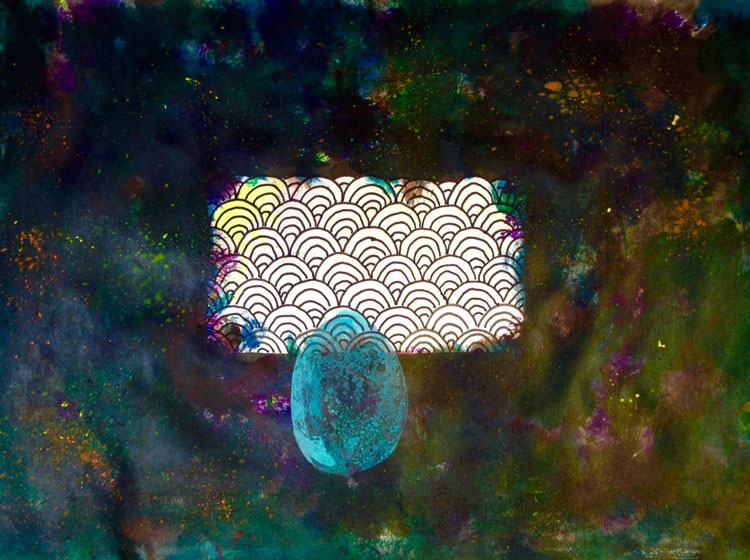
Photograph: © 2017, Rashid Maxwell
Art, Consciousness and humanity in peril
“When Consciousness is free of mind, it celebrates.”
Rashid Maxwell is a writer, poet, artist, fine art lecturer, designer, art therapist, furniture maker, organic gardener and beekeeper. His published poetry includes: Not Knowing Guides Our Feet; Life Is One Blessed Thing After Another; and Everything Is Something Else. He currently lives in Devon, England.
In this week’s guest post for The Culturium, Rashid poetizes his artistic process and points to how it can be a means for accessing universal Consciousness.
BRIGHT WHITE SUNLIGHT floods the room, shining on the whiteness of white cartridge paper spread out on the table just beside me. It is an invitation brighter than the whiteness of this laptop screen. Rainbows glide like goldfish around the walls, refracted from a crystal turning slowly in the warming air. There is a two-inch paintbrush close to hand. The paper waits for I-don’t-know-what. Not knowing is my guide.
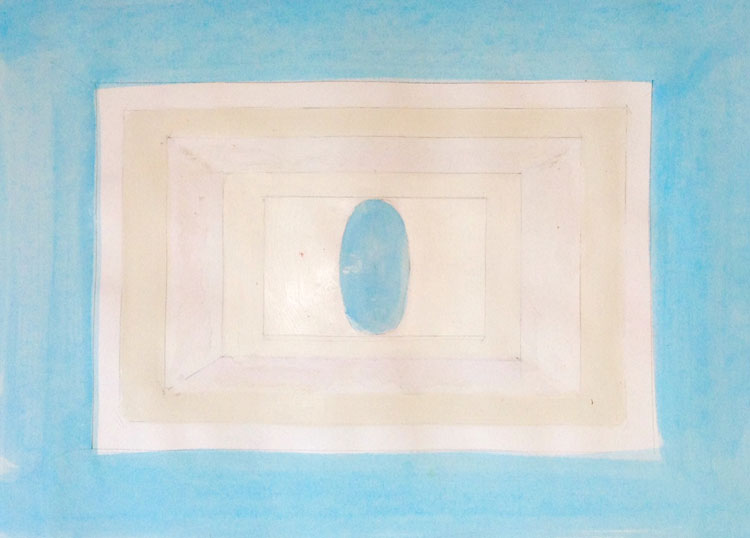
Photograph: © 2017, Rashid Maxwell
My best inspiration comes from emptiness. The void is a womb for creation.
Shakespeare and Cézanne, Dostoyevsky and Rembrandt, Beethoven and Blake, had a healthy disregard for religion, yet they clearly had access to a strong higher Self or Consciousness. Still other well known artists and creators had no religion and the very plying of their art was their immersion in Consciousness.
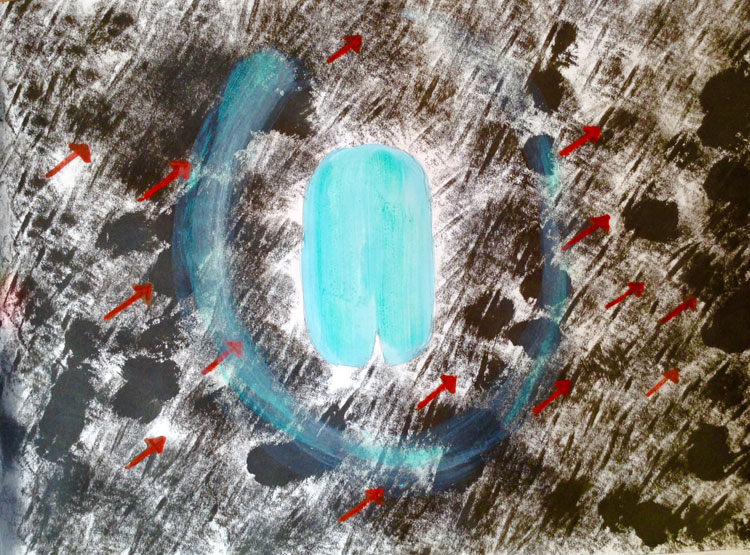
Photograph: © 2017, Rashid Maxwell
We are beings of Consciousness, a word worthy of this capital C. Consciousness is greater than we think it is and we are greater than we think we are. But we have lost our connection with that great whole.
Art is a high road to revisiting this greatness, to the lifting of our spirits, to a heightened understanding of our hedged horizons. Through art we gain a glimpse of the formless hidden in the form.
If art is the high road, you could call meditation the fast track.
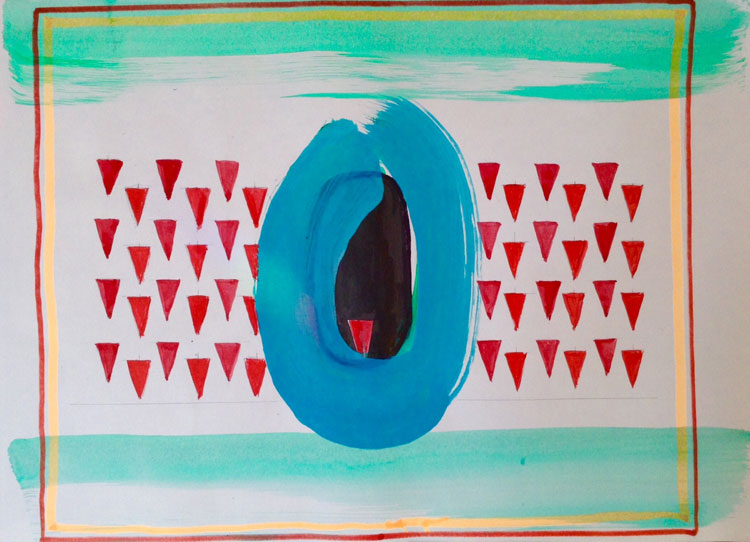
Photograph: © 2017, Rashid Maxwell
The human mind is a brilliant tool. It has brought us humans from primaeval forest into every corner of the earth and far beyond. As an instrument of imagination and communication, the power of the human mind is seemingly unbounded. And here lies the problem, the single existential problem of today.
Mind is the knowing servant who has usurped the place of the master. Mind as conceptual thought has become the useful tool that now steers the hand that wields it.
Meditation is the stepping back from mind. Meditation reclaims freedom from the tyranny of mind. In meditation, the rush-hour traffic of thoughts and emotional lading are seen as it were from a quietly detached perspective: the silent watcher on the hill. As attention and energy are withdrawn from thoughts, so their traffic slows down and diminishes. From the quietness of this viewpoint, body, mind and spirit are once again in union with each other and the world.
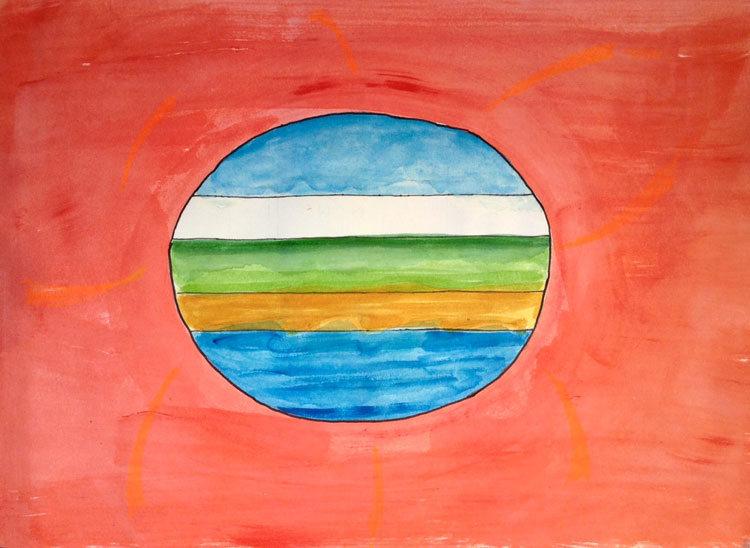
Photograph: © 2017, Rashid Maxwell
After typing these few words, I wet the cartridge paper with a decorator’s brush. It rucks and cockles in a micro-seismic turmoil. Then I mix a darkness made of burnt umber brown and ultramarine blue. I spread it on a sheet of printer paper then lay it face down on the corrugated page. That calms it. When I remove the paper, the cartridge has an ardent, mottled darkness as when one faces skywards with closed eyes.
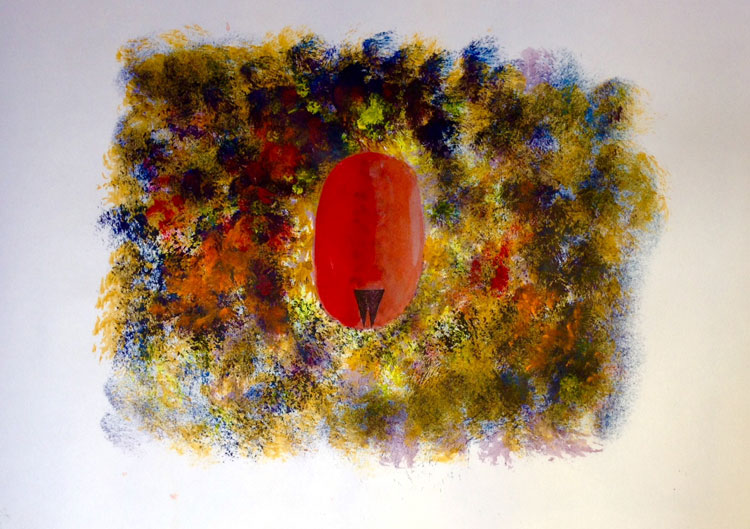
Photograph: © 2017, Rashid Maxwell
You are creative. You were told you were not. You bought the lie. You were told that creativity is the province of the artists. It is not. Everyone is patently creative when the action comes from emptiness. To be and to be creative are synonymous.
All we need to do is liberate the cluttered cellar of our mind; throw out the rusting bicycle parts, piles of ragged newspapers, old curtain rods and crumbling, dusty souvenirs. Meditation is a useful tool for that. Now anything we do will be creative: vacuuming the house, walking the dog, writing an email. When Consciousness is free of mind, it celebrates.
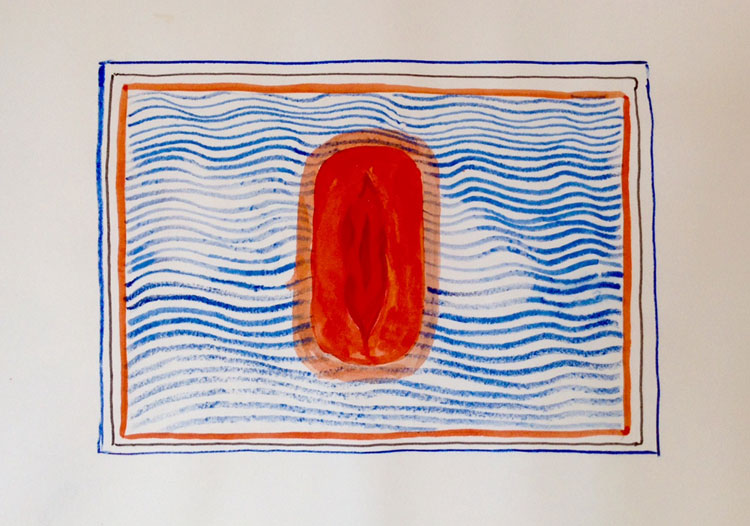
Photograph: © 2017, Rashid Maxwell
In the Zen tradition, a master tests his monks in curious ways. A young monk called Hogen took shelter in the temple of Master Tizo. Tizo asked him, “Where are you going?” The monk replied, “Oh, on a wandering, aimless pilgrimage.” “But where are you actually headed?” “I don’t know.” “Ahh,” replied the master, “not knowing is the most intimate.” In that moment, the monk attained enlightenment.
Osho comments that “not knowing” is not ignorance as opposed to know-it-all cleverness. It is being squarely in the present. No theology, dogma, philosophy or ideology brings us to Consciousness. The further shore is found hidden on this shore.
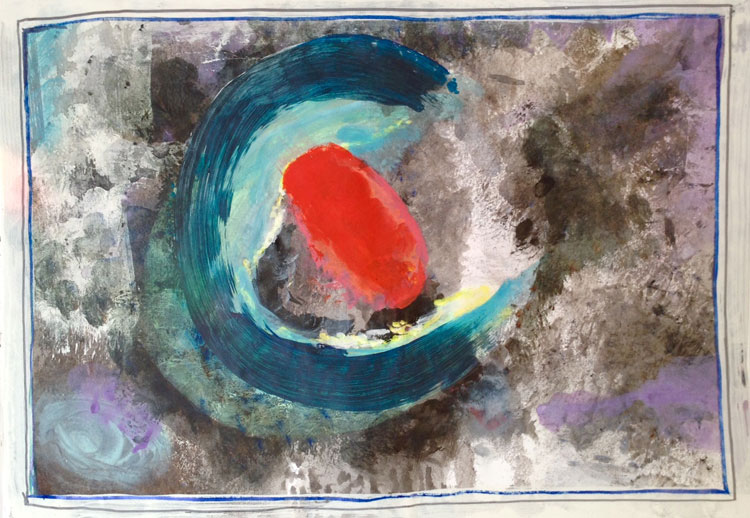
Photograph: © 2017, Rashid Maxwell
Without premeditation, a mark is made across the darkly mottled cartridge paper; a swooping, milky, bluey-green ellipse that correlates with meadows in the valley opposite, now settling into winter’s long recession.
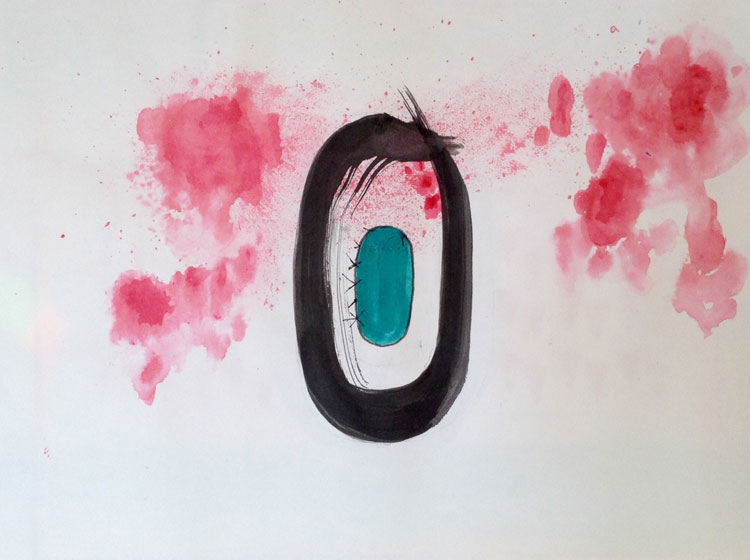
Photograph: © 2017, Rashid Maxwell
I think most people see that our world is breaking down. We know what the current problems are in our nations and our institutions, in the environment and with human rights, in the collapsing economic, political, religious and social structures. We are aware of these dire issues, and, in our hearts, we know the solutions too. What we do not know is why we do not implement them.
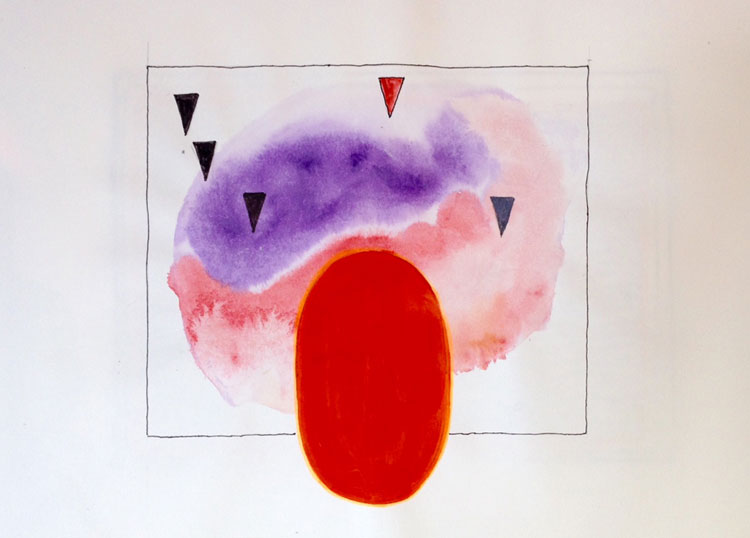
Photograph: © 2017, Rashid Maxwell
The sages have all pointed out, “to change the world we must change ourselves”. This is not idealism—it is a scientific understanding. Our technology has developed ahead of our ability to use it intelligently.
Indeed, artificial intelligence machines are being developed that can far surpass our ability to control them. We have yet to evolve further as a species, yet to move into our full potential. Neurobiologists have located a rarely used part of the brain that is sometimes activated in meditation and sometimes in the practice of art, sex and sport.
These neurological processes induce the understanding that no man is an island, that everything is connected to everything, that boundaries are mere figments of the mind. Physicists too are saying about matter, “there is no such thing as a thing”.
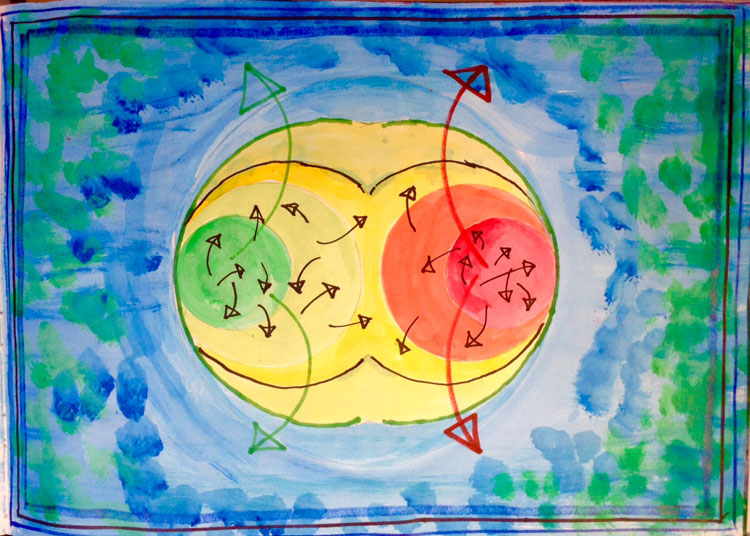
Photograph: © 2017, Rashid Maxwell
Rilke and Matisse and the ones who stir us deeply, do so because we recognize a truth they point to. Consciousness recognizes Consciousness. They have bridged the mundane with the sacred. For a moment the artist has leapt clear of gravity and is held in a sphere of grace. When once again gravity reasserts itself, the artist falls back to earth. The mind, that querulous servant of the heart, pretends again that he is the boss.
Lovers making love, the long-distance runner, the footballer and the tennis player lift into what they call “The Zone”. It is a state beyond the mind. Here knowing arises out of not knowing. Fluid, creative responses happen from a heightened perception of reality.
Meditation does not bridge the mundane with the sacred, the physical with the metaphysical; it actually reveals they are not separate states.
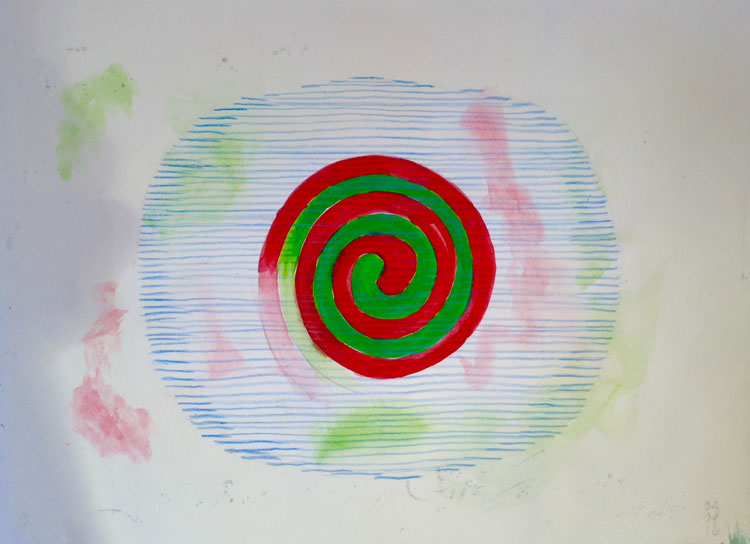
Photograph: © 2017, Rashid Maxwell
The darkness and the greenness of the painting now invite a vivid colour and a structured form. I draw a hot orange oval. An egg? A shiva-lingam? A probe for outer space? Ahhhh! I blew it. Mind came in and became an idea. The shapes do not dance together. A secondary, long diagonal mark has to go. I carefully paint over it with white and grey, wait for an alternative impulse.
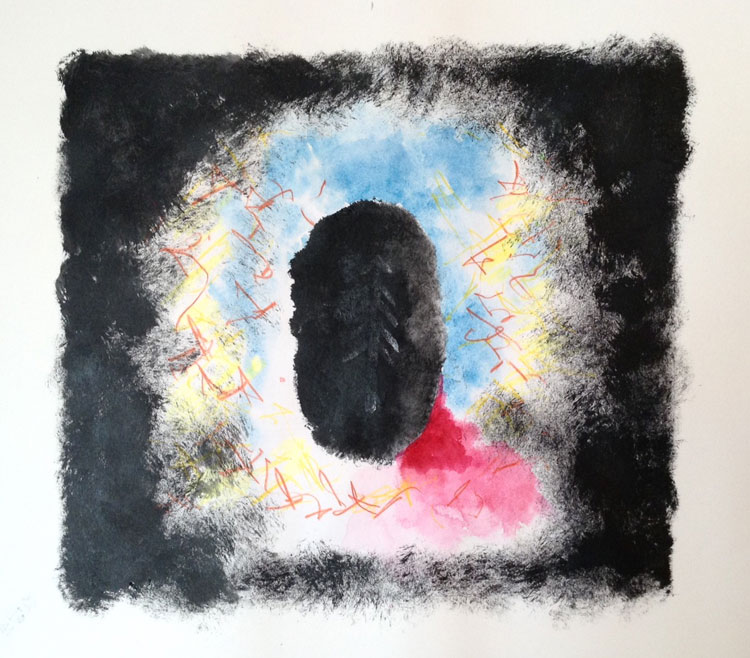
Photograph: © 2017, Rashid Maxwell
All our global ills, it seems to me, are essentially one illness. The name of the malady is unconsciousness: unawareness. All the environmental and social disorders are caused by man’s unconscious actions—our ignorance of who and what we really are, our connection to all things and the significance of this. The arts are a way to return to the truth. Meditation is the long-term medication.
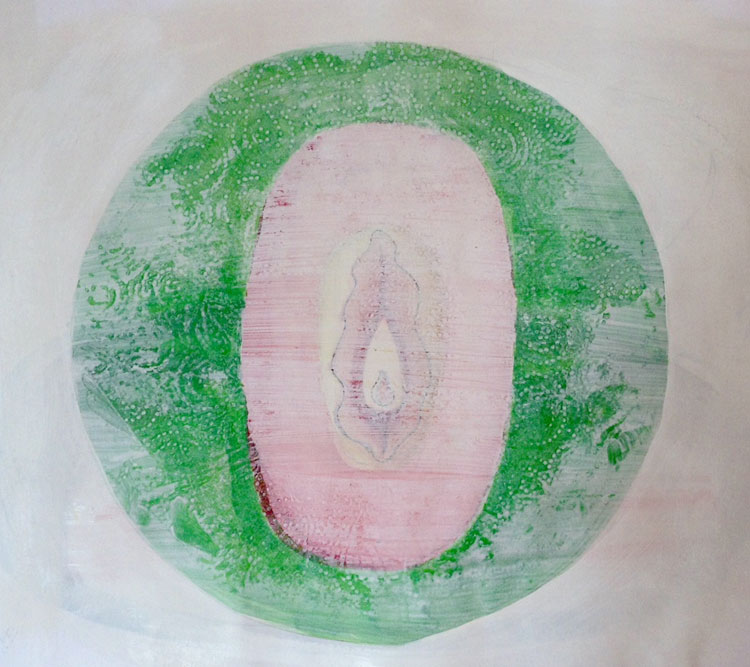
Photograph: © 2017, Rashid Maxwell
For many years, only one painting out of a hundred that I painted ever came anywhere near success. Since meditating regularly, the factor has improved to over ninety out of a hundred.
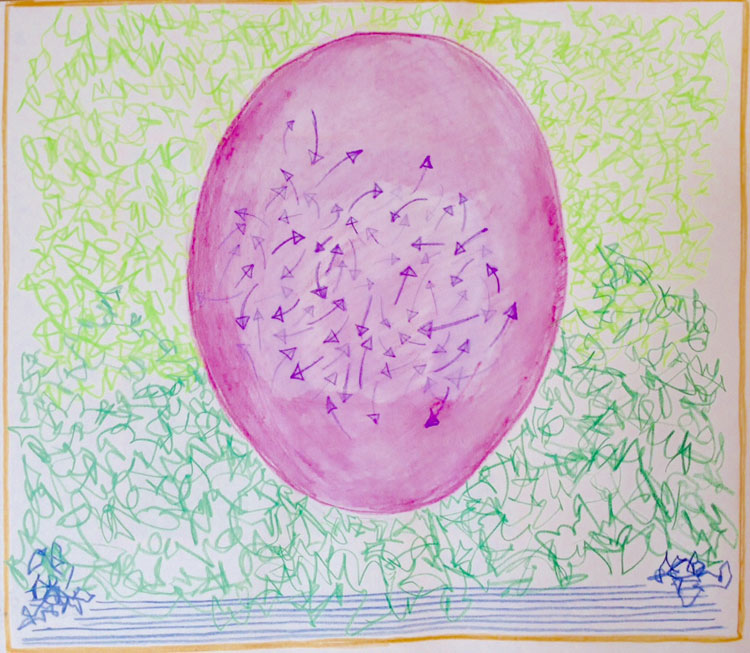
Photograph: © 2017, Rashid Maxwell
Place your ear to the ground. Listen carefully. Below the sounding brass of politicians and the press, below the harsh percussion of the multinational corporations, soft voices offer answers to the questions that we hardly dare to ask ourselves. “Let the dead bury their dead. The old, separatist, competitive, carbon-era culture must bury itself before it buries all of life on earth. Our choice is love or fear. The new way, the only way now, is the way of the heart, of connection and cooperation. It does not come with plans and programmes. It comes from not knowing.”
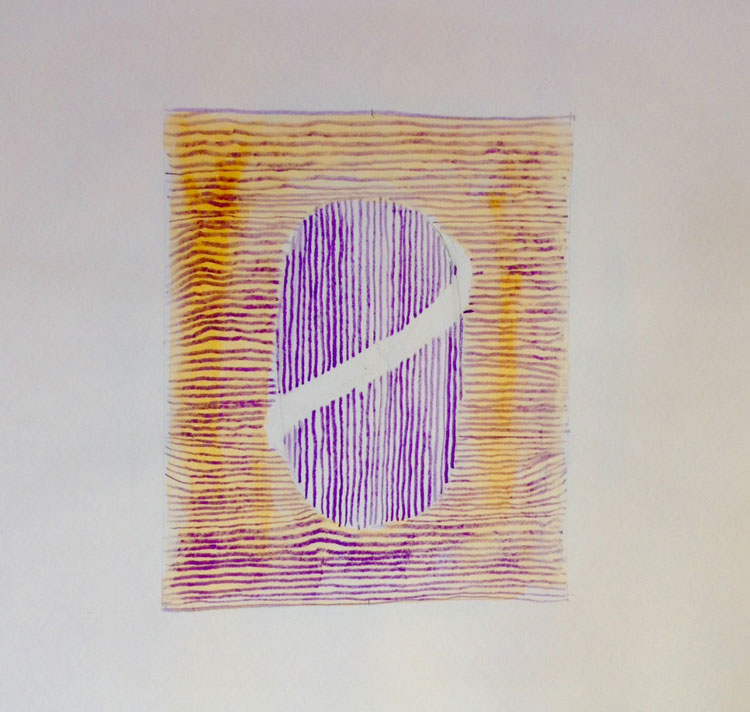
Photograph: © 2017, Rashid Maxwell
This errant, evolving painting is inspired by meditation. It goes through some radical changes. It becomes a mess. I add more stippled shade, a riff of lemon yellow on the edge of darkness, a circling of the oval. Ahh! Now it is settling down; shapes and colours start to integrate. I don’t want it to be an illustration or depiction but a realization of meditation: when someone looks at it, their higher consciousness is touched.
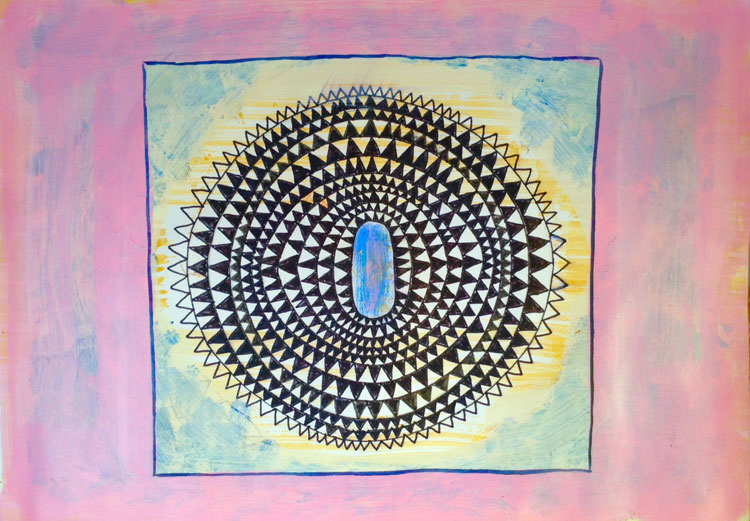
Photograph: © 2017, Rashid Maxwell
To whom belong these voices questioning our attitudes and concepts? To the young millennials worldwide and to the cutting edge of science, to the sages and the artists. They come too, from the domain of meditation and of love.
All of life is interconnected. There are many quiet ways that this is being lived: through altruism, cooperative and community works, the pursuit of the arts and sciences, intelligent use of the internet, deep understanding and so on. The shortest most unerring way is, in my understanding, meditation.
However, the salient fact is that we modern, fractious men and women have lost the ability to sit still and detach ourselves from this restless, hot and cold mind. No need to worry. The contemporary mystic, Osho, has designed a number of active meditations for exactly this eventuality.
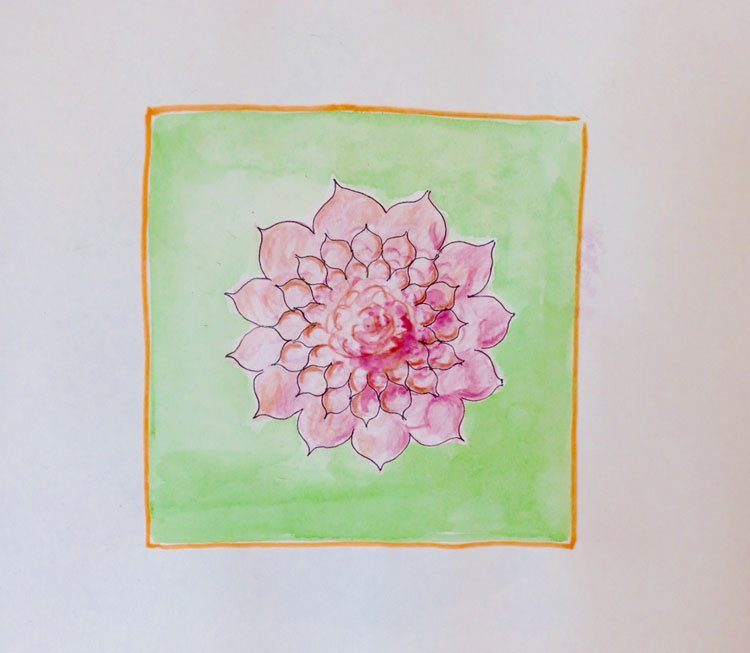
Photograph: © 2017, Rashid Maxwell
Meditation is now well on its way out of the Himalayan caves and monasteries into households, boardrooms and, very importantly, schools. Meditation reaches out beyond the mind. It leaves this fabricated ego far behind. This ego is the entity that separates. Ego is the enemy of truth.
The choice for humanity is urgent—devastation or transformation. Art that evokes spirit, Consciousness, the-all-that-is, is headed in the right direction. And in my experience, meditation is the fast track.
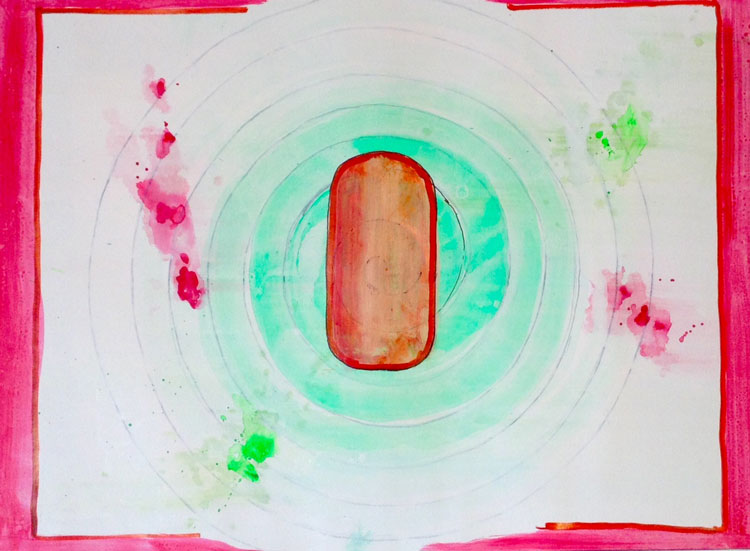
Photograph: © 2017, Rashid Maxwell
This little painting has been through a shoal of rapid revisions. The circle presently predominates. The first greenwash has shrunk and now is turquoise. For a while, my hand and eye were working in swift unison and my mind could not keep up. Now the sun has edged behind a line of oaks, the light is cool and suddenly the picture feels complete. Complete, as well, is the plaited fabric of this writing, the writer and the written.
Post Notes
- Rashid Maxwell’s website
- Rashid Maxwell on Amazon
- Rashid Maxwell: In Memoriam
- Rashid Maxwell: Drawn In
- Rashid Maxwell: Contagion of Silence
- Rashid Maxwell: A Master for Life
- Wassily Kandinsky: Concerning the Spiritual in Art
- Paul Cézanne: La Montagne Sainte-Victoire
- William Blake: All Religions Are One
- Rollo May: My Quest for Beauty
- Agnes Martin: Writings
- Guy Laramée: Fraîcheur
- Laurie Stern: Spirituality Expressed Through the Beauty of Art
- Patrick Howe: Post Personalism in Art
- Roberta Pyx Sutherland: Ensō Variations
- Tal Waldman: Directed Randomness
